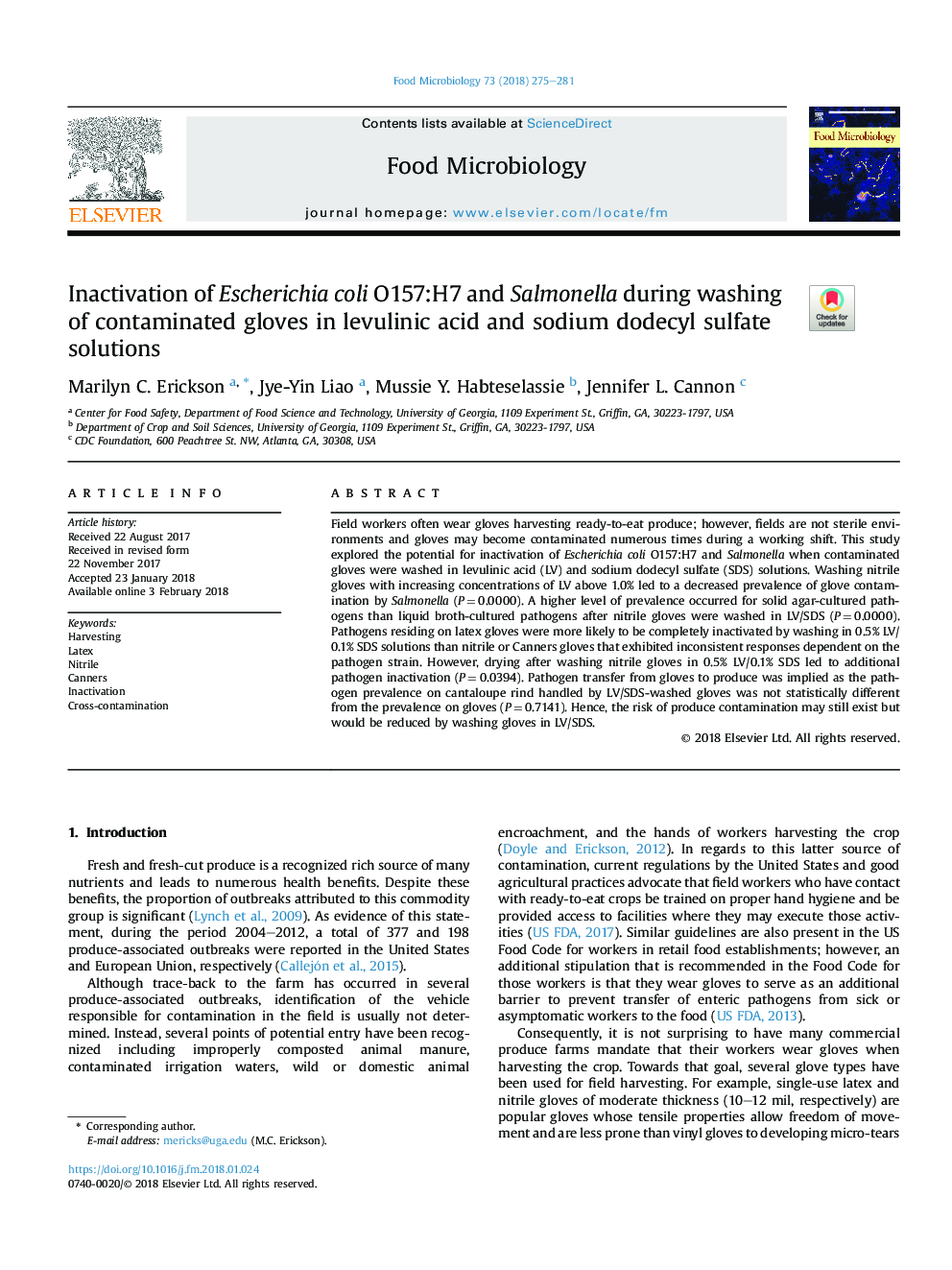| Article ID | Journal | Published Year | Pages | File Type |
|---|---|---|---|---|
| 8843542 | Food Microbiology | 2018 | 7 Pages |
Abstract
Field workers often wear gloves harvesting ready-to-eat produce; however, fields are not sterile environments and gloves may become contaminated numerous times during a working shift. This study explored the potential for inactivation of Escherichia coli O157:H7 and Salmonella when contaminated gloves were washed in levulinic acid (LV) and sodium dodecyl sulfate (SDS) solutions. Washing nitrile gloves with increasing concentrations of LV above 1.0% led to a decreased prevalence of glove contamination by Salmonella (Pâ¯=â¯0.0000). A higher level of prevalence occurred for solid agar-cultured pathogens than liquid broth-cultured pathogens after nitrile gloves were washed in LV/SDS (Pâ¯=â¯0.0000). Pathogens residing on latex gloves were more likely to be completely inactivated by washing in 0.5% LV/0.1% SDS solutions than nitrile or Canners gloves that exhibited inconsistent responses dependent on the pathogen strain. However, drying after washing nitrile gloves in 0.5% LV/0.1% SDS led to additional pathogen inactivation (Pâ¯=â¯0.0394). Pathogen transfer from gloves to produce was implied as the pathogen prevalence on cantaloupe rind handled by LV/SDS-washed gloves was not statistically different from the prevalence on gloves (Pâ¯=â¯0.7141). Hence, the risk of produce contamination may still exist but would be reduced by washing gloves in LV/SDS.
Related Topics
Life Sciences
Agricultural and Biological Sciences
Food Science
Authors
Marilyn C. Erickson, Jye-Yin Liao, Mussie Y. Habteselassie, Jennifer L. Cannon,
